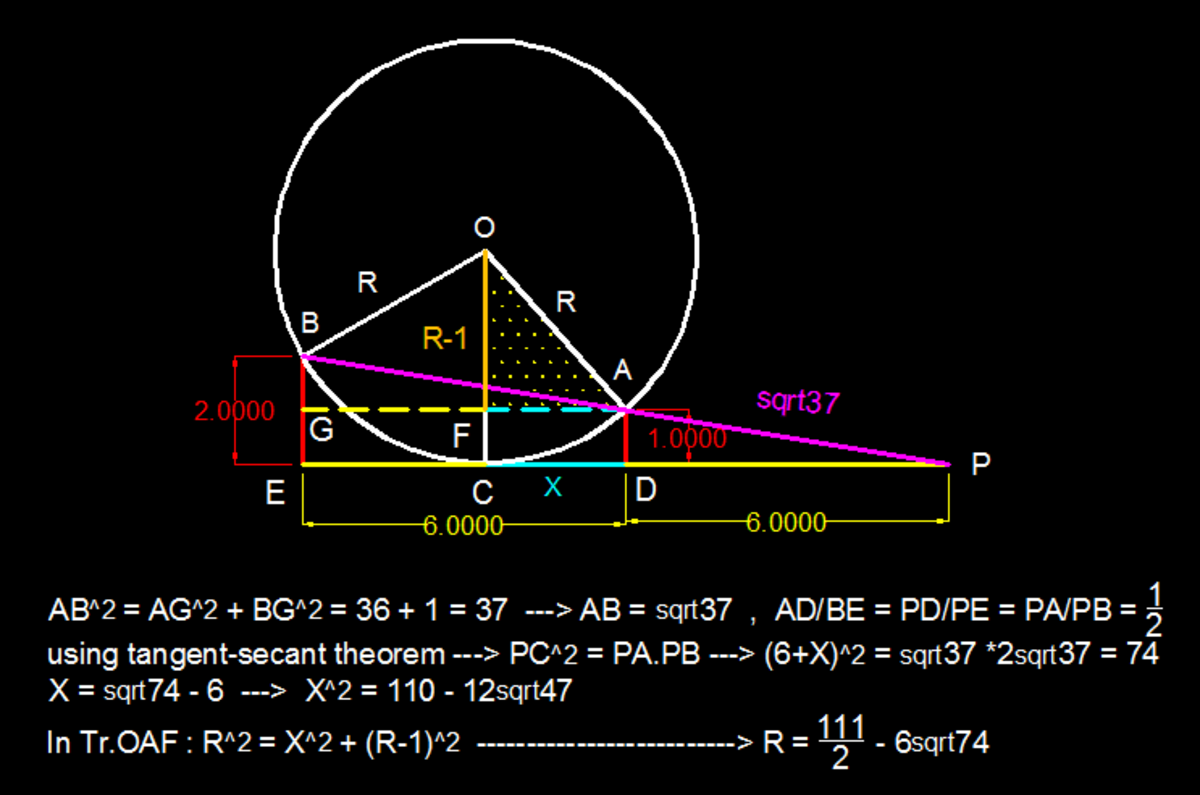A circle between two squares
Let us get a little poetic here: "A rose between two thorns... A circle between two squares..."
In the figure, we see a circle resting between two squares which touch it from either side. The circle is tangential to the line joining the bottoms of the squares. The left square has side length 2 and the right square has side length 1. The distance separating the two squares is 6.
If the radius of the circle can be expressed as where and are coprime positive integers and is the smallest possible positive integer, then find .
The answer is 193.
This section requires Javascript.
You are seeing this because something didn't load right. We suggest you, (a) try
refreshing the page, (b) enabling javascript if it is disabled on your browser and,
finally, (c)
loading the
non-javascript version of this page
. We're sorry about the hassle.

Let the radius of the circle be r . Then, using Pythagorean theorem , we have:
r 2 − ( r − 1 ) 2 + r 2 − ( r − 2 ) 2 r 2 − ( r 2 − 2 r + 1 ) + r 2 − ( r 2 − 4 r + 4 ) 2 r − 1 + 4 r − 4 2 r − 1 + 2 ( 2 r − 1 ) ( 4 r − 4 ) + 4 r − 4 2 8 r 2 − 1 2 r + 4 3 2 r 2 − 4 8 r + 1 6 4 r 2 − 4 4 4 r + 1 6 6 5 = 6 = 6 = 6 = 3 6 = 4 1 − 6 r = 3 6 r 2 − 4 9 2 r + 1 6 8 1 = 0 Squaring both sides Squaring both sides
⟹ r = 8 4 4 4 − 4 4 4 2 − 4 ( 4 ) ( 1 6 6 5 ) = 8 4 4 4 − ( 4 ) ( 3 ) 3 7 2 − 1 8 5 = 2 1 1 1 − 3 1 1 8 4 = 2 1 1 1 − 6 7 4 Note that 8 4 4 4 + 4 4 4 2 − 4 ( 4 ) ( 1 6 6 5 ) > 6 , rejected
⟹ a + b + c + d = 1 1 1 + 2 + 6 + 7 4 = 1 9 3 .